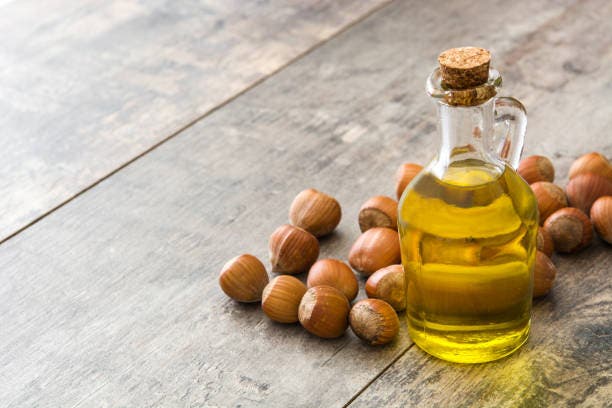Research suggests that the naringenin in grapefruit can lower blood sugar levels – and its mechanism of action is extremely similar to that of metformin. This is why it is important to remember that their combined use can lead to hypoglycemia.
Grapefruit’s ability to affect insulin production parameters, discovered in a 2006 study¹, has spawned a number of theories about its “benefits” for weight loss and weight loss – including diets based on eating several grapefruits a day.
A 2019 published review of scientific papers² shows that the bioactive component of grapefruit, naringenin, can indeed lower blood glucose levels and improve insulin sensitivity. The researchers even compare its potential for action with metformin.
Grapefruit – what does it contain?

The grapefruit is a plant obtained³ by a natural cross between a sweet pomelo and a sweet orange on the tropical islands of Barbados in the mid-18th century. This is why its Latin name, Citrus Paradisi, can be translated as “citrus of paradise.
There are now many varieties and species of grapefruit, differing in both fruit size and flavor – and in the color of the flesh. In all cases, however, the red color is due to lycopene, a substance that is an isomer of beta-carotene.
The bitter taste of grapefruit, in turn, is due to the presence of the flavonoid naringenin. Although it is also found² in other citrus fruits, but in much smaller amounts. For example, it is about 20 times less in an orange, and 100 times less in a lemon.
Composition and calories
Grapefruit contains³ more than 50 different natural substances – among them 4 organic acids, about 15 flavonoids, limonoids, 4 kinds of carotenoids and 6 fatty acids.
The content of these substances varies considerably depending on the variety and growing conditions of the particular fruit – affecting, among other things, the caloric content.
On average, 100 g of grapefruit pulp contains 10-11 g of carbohydrates, about 2 g of fiber, less than 1 g of protein and less than 0.3 g of fat – having a caloric value of about 40-50 kcal.
How does it affect blood sugar levels?

The mechanism for the effect² of naringenin in grapefruit on lowering blood sugar levels is based on several components at once – including increasing oxygen utilization and increasing blood glucose utilization (through activation of the glucose transporter type 4).
Among other things, naringenin affects the 5’AMP-activated protein kinase – a complex protein that controls the energy balance of the cell – which actually causes the body to use the glucose present in the blood more actively for metabolic needs.
Important caveats.
Apparently, grapefruit can be considered one of the few foods that can markedly lower blood glucose levels. While this has positive aspects, there are also negative ones.
To avoid causing unwanted hypoglycemia (a sudden drop in sugar), be extremely cautious when consuming tablet blood glucose-lowering drugs and large quantities of grapefruit together.
Grapefruit – carbohydrate profile

With the exception of fiber, grapefruit contains³ only simple carbohydrates (i.e., no starch in the composition). Just under half of the total carbohydrate content is sucrose, and the remaining proportion is divided into comparable proportions of glucose and fructose.
Half a grapefruit, given the variation in size, may be equated with the consumption of 7-10 g of pure glucose – which is comparable to the simple carbohydrate content of one medium-sized kiwi.
Fiber content
Like other citrus fruits, grapefruit contains mostly water-soluble fiber, about 1 g in half a medium-sized fruit.
By comparison, a small orange of similar mass may contain up to 2 g of soluble fiber.
Research suggests that the naringenin in grapefruit can lower blood sugar levels – and its mechanism of action is extremely similar to that of metformin. This is why it is important to remember that their combined use can lead to hypoglycemia.
Source:
- Grapefruit and its biomedical, antigenotoxic and chemopreventive properties, Source
- Antidiabetic Properties of Naringenin: A Citrus Fruit Polyphenol, source
- The effects of grapefruit on weight and insulin resistance: relationship to the metabolic syndrome, Source
- Grapefruit juice improves glucose intolerance in streptozotocin-induced diabetes by suppressing hepatic gluconeogenesis, Source
Read also:
- How do I check my gastrointestinal function?Stomach pain, constipation or diarrhea, bloating, belching, heartburn? These are all symptoms of problems in the gastrointestinal tract. It starts with the mouth and esophagus and ends with the intestines and rectum.
- What are the benefits of hazelnut oil for the skin?Hazelnut oil is rich in vitamins and essential fatty acids that nourish the skin. Here are a few reasons why you should add this oil to your skin care routine.
- Immune-boosting aromatic oilsThere are many products and treatments that can help your body to build a natural resistance to the harsh winter months, and aromatherapy is one of them. There are many studies supporting the healing power of aromatherapy and it is good for both mental and physical health. Aromatic essential oils also have many health benefits… Read more: Immune-boosting aromatic oils
- Marula Oil Benefits, Uses, and PrecautionsMarula Oil is an exotic oil that comes from the African Marula tree. It’s a good ingredient for skin, hair, and nails. Learn more about the benefits and precautions of Marula Oil with our guide.
- Goal setting for students, children and young peopleRemember when you learned how to set goals? If you have trouble answering this question, you are not alone! Most of us don’t spend much time thinking about how we set our goals. In fact, many of us don’t even think of goal setting as a skill; rather, it’s something we do without much thought.… Read more: Goal setting for students, children and young people
The articles on this site are for information purposes only. The site administrators are not responsible for attempting to apply any recipe, advice or diet, nor do they guarantee that the information provided will help or harm you personally. Be cautious and always consult a doctor or nutritionist!
*All products recommended are selected by our editorial team. Some of our articles include affiliate links. If you buy something through one of these links, you help us earn a small commission from the seller and thus support the writing of useful and quality articles.










